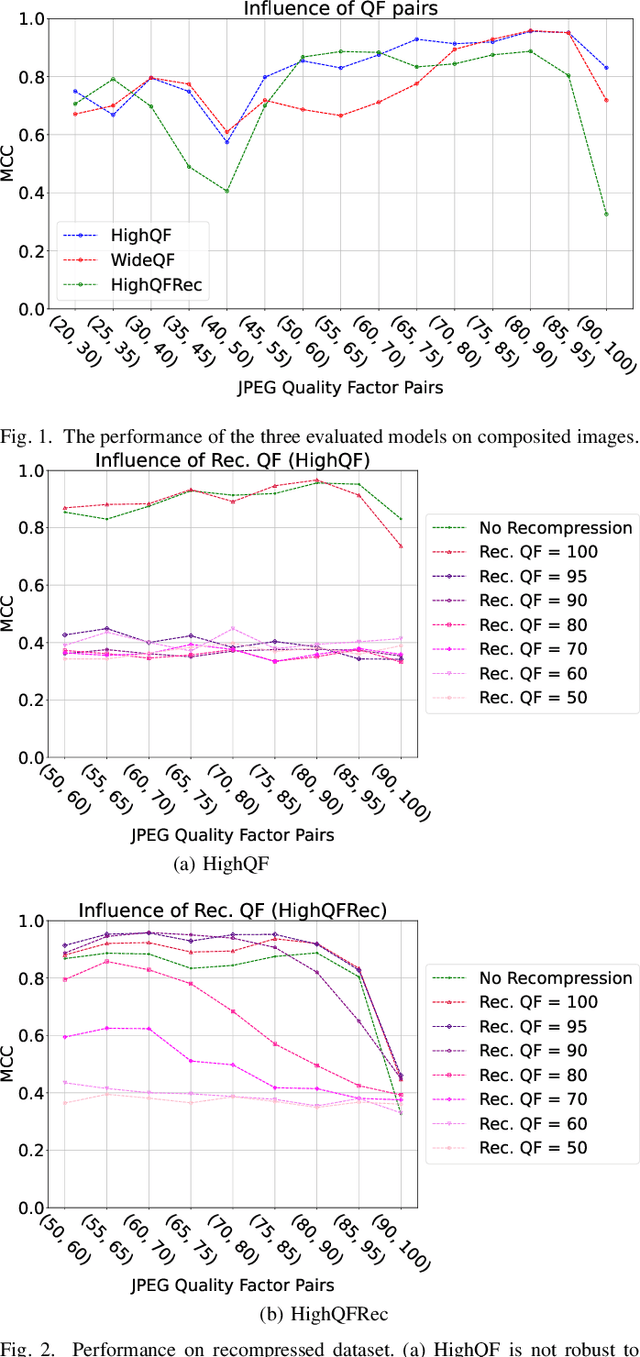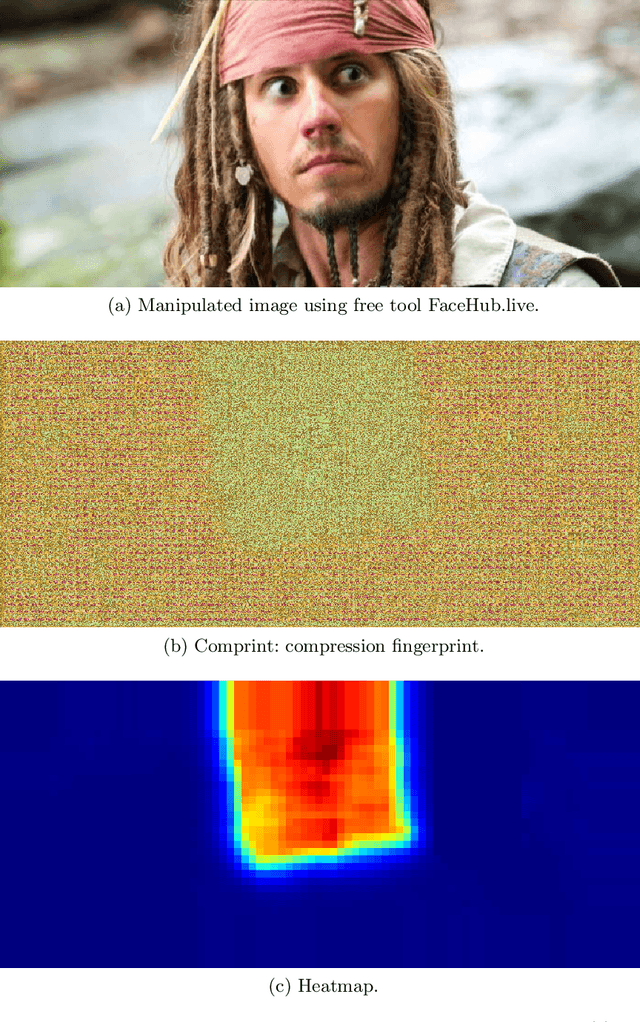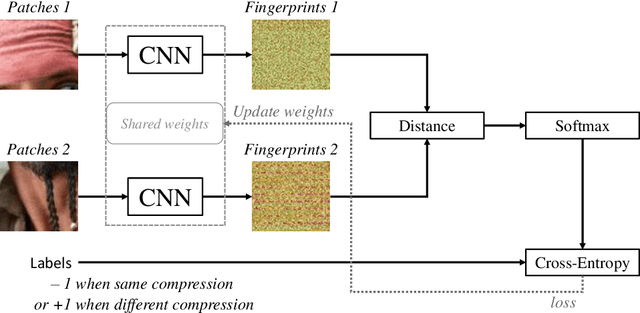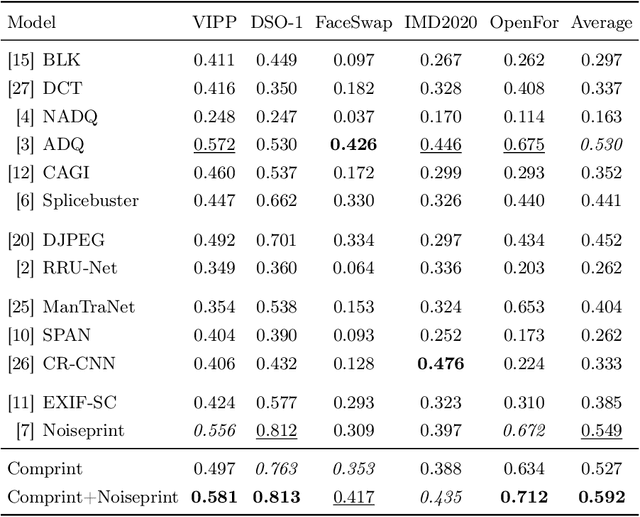Dante Vanden Bussche
Training Data Improvement for Image Forgery Detection using Comprint
Nov 25, 2022
Abstract:Manipulated images are a threat to consumers worldwide, when they are used to spread disinformation. Therefore, Comprint enables forgery detection by utilizing JPEG-compression fingerprints. This paper evaluates the impact of the training set on Comprint's performance. Most interestingly, we found that including images compressed with low quality factors during training does not have a significant effect on the accuracy, whereas incorporating recompression boosts the robustness. As such, consumers can use Comprint on their smartphones to verify the authenticity of images.
Comprint: Image Forgery Detection and Localization using Compression Fingerprints
Oct 05, 2022



Abstract:Manipulation tools that realistically edit images are widely available, making it easy for anyone to create and spread misinformation. In an attempt to fight fake news, forgery detection and localization methods were designed. However, existing methods struggle to accurately reveal manipulations found in images on the internet, i.e., in the wild. That is because the type of forgery is typically unknown, in addition to the tampering traces being damaged by recompression. This paper presents Comprint, a novel forgery detection and localization method based on the compression fingerprint or comprint. It is trained on pristine data only, providing generalization to detect different types of manipulation. Additionally, we propose a fusion of Comprint with the state-of-the-art Noiseprint, which utilizes a complementary camera model fingerprint. We carry out an extensive experimental analysis and demonstrate that Comprint has a high level of accuracy on five evaluation datasets that represent a wide range of manipulation types, mimicking in-the-wild circumstances. Most notably, the proposed fusion significantly outperforms state-of-the-art reference methods. As such, Comprint and the fusion Comprint+Noiseprint represent a promising forensics tool to analyze in-the-wild tampered images.
 Add to Chrome
Add to Chrome Add to Firefox
Add to Firefox Add to Edge
Add to Edge